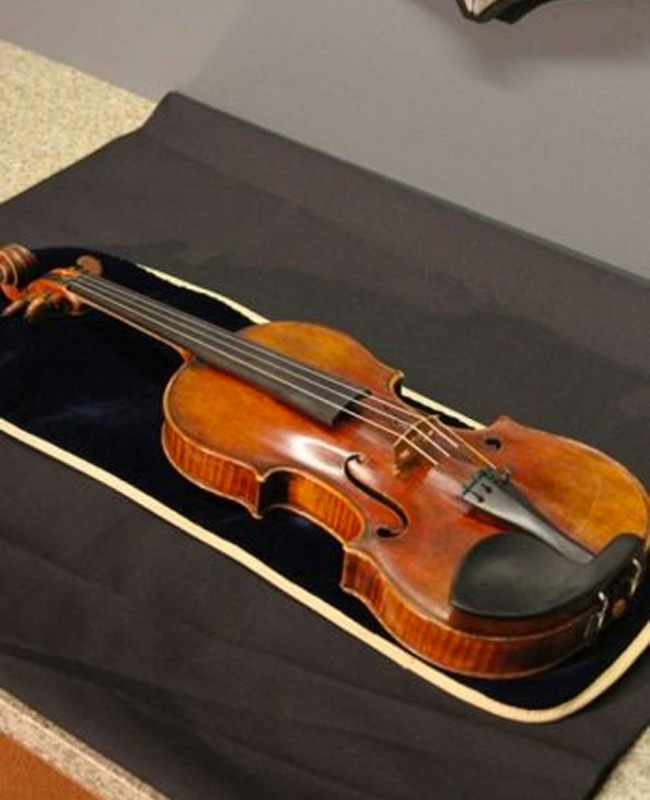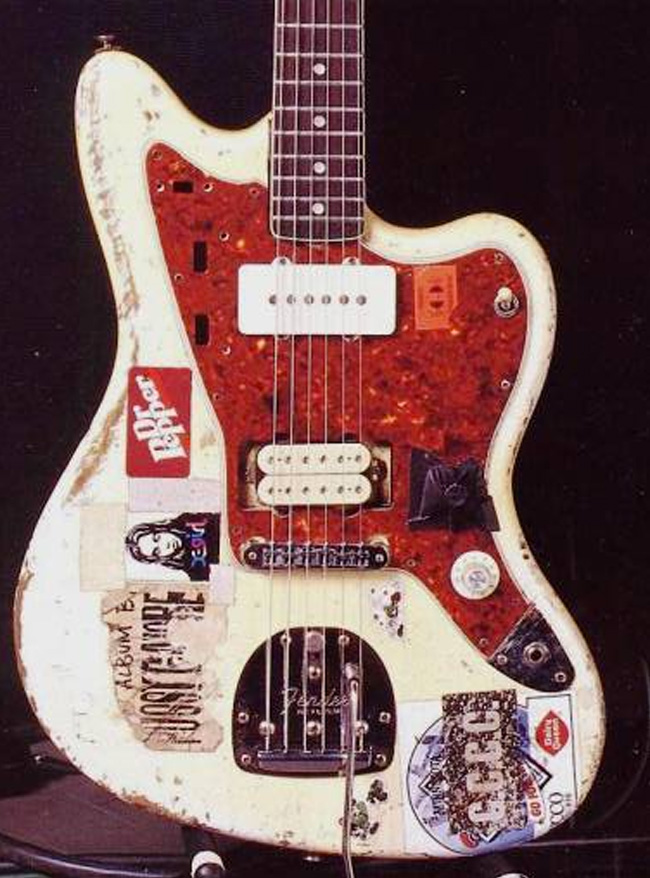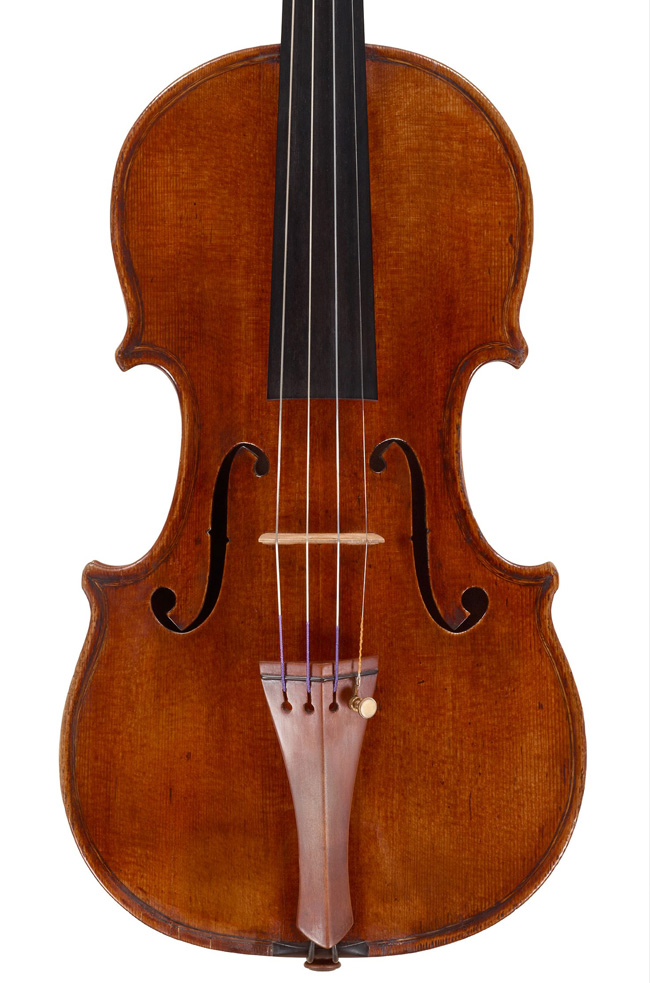Earlier this month, NPR ran a heartwarming story written by Nina Totenberg about her father’s Stradivari–made violin. On March 8, she wrote that the virtuoso Mira Wang played her family’s Ames Stradivarius in a private concert. Though a Stradivarius isn’t just any violin, one being played in concert is barely newsworthy. But this was not just any Strad.
This particular violin was stolen from the virtuoso Roman Totenberg in 1980, after he had toured the world playing the instrument for 38 years. He died in 2012 at the age of 101, still dreaming about opening his case to find the violin. Built in 1734, the violin was sure to survive Roman himself, but how and where?
The Strad was returned to the Totenberg’s family in 2014 after its thief’s ex–wife found it in her closet. Restoring the instrument took time, and that March 8 performance was a victory for the family. Wang was Totenberg’s protege, and it was the family’s personal request that she be the one to play it.
A huge quantity of stolen instruments never find their way home, but every once in a blue moon, a special piece of gear turns up. The characters in these gear stories include Nazi looters, Sonic Youth, and a wannabe art thief.
John Lennon’s Gibson Acoustic
In 1962, John Lennon and George Harrison ordered a pair of Gibson J–160Es from a Liverpool guitar store. That was the year Ringo would join the Beatles, and the year before the band would release its debut album Please Please Me.
Lennon would tour with the guitar for about a year and a half as the Beatles began their ascent on the charts and into international superstardom. Then, in December 1963, Lennon’s Gibson J–160E disappeared.
In 1969, a John McCaw in San Diego, California would purchase a Gibson acoustic for $175 at a local music store and proceed to play around with it in his home for the next 45 years of his life. It’s the guitar that his son learned to play on, and the two of them kept it in generally pristine condition.
An NBC affiliate in San Diego reports he’d pick up a 2012 issue of Guitar Aficionado and see a picture of George Harrison’s guitar that looked identical. After getting the guitar authenticated McCaw realized what he had on his hands, ultimately lending it to the Grammy museum, where it now sits like any other piece of stolen art, returned and presented for the world’s benefit.
RELATED ARTICLE
The 1715 Lipinski Stradivarius of Milwaukee, WI

1715 Lipinksi Stradivarius
You might consider a 299–year–old Stradivarius priceless, if not for the fact that the Milwaukee Symphony Orchestra’s Lipinski Strad from 1715 was valued at $5 million in 2012. The MSO’s concertmaster Frank Almond played and cared for the instrument, and he likely never realized that the carrying his orchestra’s violin would make him the target of a brutal assault in the coldest part of January.
Chicago Magazine recounts that deep in the winter of 2014, Almond was leaving a performance in Wauwatosa, Wisconsin when he was attacked with a Taser as he placed his violin in his car’s backseat. The violin disappeared, and the theft sparked a dragnet so wide that the FBI got involved. After all, the violin was effectively a taxpayer–owned heirloom.
The investigation lasted only nine days. The Strad turned up in an attic in Milwaukee and the two men who were arrested promptly pled guilty. Salah Salahdyn considered himself to be something of a mastermind art thief, receiving the stiffer sentence of seven years in prison and a $4,014.57 fine that he promptly contested.
DJ Quik’s MPC 3000
If there were a Stradivarius of the hip hop world, it would the be Akai MPC 3000. This was the sampler perfected, thanks in large part to the work of drum machine innovator Roger Linn. The MPC 3000 would play a large part in defining hip hop as a form in the ‘90s and ‘00s.
The West Coast hip hop scene in the early ‘90s used MPCs to lend funk samples a razor’s edge, with DJ Quik emerging early on as a luminary on the scene who was adept at both rapping and production. His debut album Quik Is the Name went platinum and remains a cornerstone of the West Coast G–Funk style.
In October of 2013, DJ Quik took to Twitter to announce that his customized MPC 3000 had been stolen.
It must have taken just a few weeks for the MPC to surface because, bizarrely, DJ Quik returned to Twitter to announce that he would be selling all of his gear, posting a picture of that customized MPC 3000 as one of the pieces on the chopping block.
REWARD_AKAI LINN MPC-3000 LIMITED EDITION #476 of 100 CUSTOMIZED BY BRUCE FORAT PLUM COLOR & BLACK LACQUER TRIM. "MAD SCIENCE" STOLEN 10/11
— DJ Quik (@djquik) October 13, 2013
For Sale. MPC3000 w/1Gb official Dj Quik loops and samples used on multiple chart topping songs. pic.twitter.com/WOMV7xWCED
— DJ Quik (@djquik) October 28, 2013
What happened in the few weeks between that MPC disappearing and returning that inspired DJ Quik to sell it all? Why was he itching to get rid of the sampler just as soon as it showed up? The mystery here is a very different one than “where did the gear go?”
Sonic Youth’s Modded Guitars
On Independence Day in 1999, a Ryder truck containing a massive amount of Sonic Youth’s gear was stolen in Orange County, California. Pitchfork reports that the truck turned up in Los Angeles a few days later, but the guitars, amps, and effects did not.

Thurston Moore's Jazzmaster
Sonic Youth, as fans will know, is not exactly the type of band to modify their gear to make it more valuable. They aren’t commissioning Gibson Custom Shop guitars with inlays made of obscure minerals with quilted maple tops in unique hues.
If anything, Sonic Youth has a tendency to make their guitars worse by resale standards, stripping electronics down to the bare essentials like a volume knob, or scuffing up finish and covering a body in stickers. You can practically hear Lee Ranaldo’s mom yelling at him for what he did to the first guitar she bought him.
At a show in Los Angeles in 2005, Moore and Ranaldo were approached by some down–and–out youth who said they knew who orchestrated the theft and could get them some instruments back. That’s how Sonic Youth, for $500 each, recovered several pieces of stolen gear, including more guitars belonging to Moore and Ranaldo.
Then, in 2012, a Jazzmaster that was distinctively modified like one stolen from Thurston Moore turned up in a discussion on the Offset Guitars message board. Although refinished, the Jazzmaster was verified as Moore’s own and was returned to him.
Not everything was recovered, but somewhere out there might just be a Jazzmaster mangled by Thurston Moore being sold in “Fair Condition.”
Nazi Plunder
As outlined in a fascinating article published by The Strad, a magazine devoted to orchestral strings, Nazi Germany had a formalized and effective program for plundering musical instruments from Jewish populations across Europe.

1783 Guadagnini
This process started as early as 1933 when all musicians playing in state–owned opera houses and music halls were mandated to register with the government in an effort to weed Jewish musicians out of these public performances.
Many times, this registration would result in a Jewish musician’s instrument getting confiscated. The Nazis became even more brazen in the 1940s, simply rounding up all instruments from Jewish ghettos and property abandoned in a besieged cities like Warsaw and Paris.
Many of the instruments that disappeared were recovered along with other looted valuables by the American military after the war. The Americans maintained as detailed records as they could about these recovered goods, which is how we know about a Guadagnini sold in the post–war Netherlands.
A married couple by the name of Bleier purchased a 1783 Guadagnini from a shop in the Netherlands in 1948. When they sought a certificate of authenticity for the violin, they learned that it belonged to a Jew from the Netherlands who was killed by the Nazis.
According to Dutch records, the instrument was “removed by force” during German occupation, and the shop obtained this violin under questionable circumstances.
There are many tales of valuable violins, including Stradivari, plundered by the Nazis, but few with concrete verification and public records of resurfacing.
RELATED ARTICLE
The Stradivarius Cello That Almost Became a CD Case
Get ready for a story full of hapless characters with no idea of how to treat a cello. In 2004, the $3.5 million “General Kyd” Stradivarius cello went missing. It was stolen off the front steps of its owner's home, a cellist who left it outside at night. To err is human, right?
Whoever stole that cello off the stoop must have had no idea what they had, or had no patience to find out how much a cello could fetch. The General Klyd showed up three days later near a dumpster in the city’s Westside neighborhood.
At that point, it was discovered by a 29–year–old resident of the neighborhood. She took the cello home and asked her boyfriend to fashion a quicky CD case out of the instrument. Apparently Los Angelinos have no idea of the value, monetary and otherwise, of an orchestral instrument.
Well, at least this woman watched the news. As the LA Times reports, the Los Angeles Police Department was approached three days after the cello went missing by a lawyer representing the woman who needed a wood CD case. She figured out what she had and sought its return to its rightful owner.
When commenting to the LA Times, the lawyer relayed a remark from his client. “Thank God my boyfriend doesn't work too quickly on things of mine.”
Reverb would be more than happy to collaborate with the city of Los Angeles on some PSAs about how to care for an instrument.


